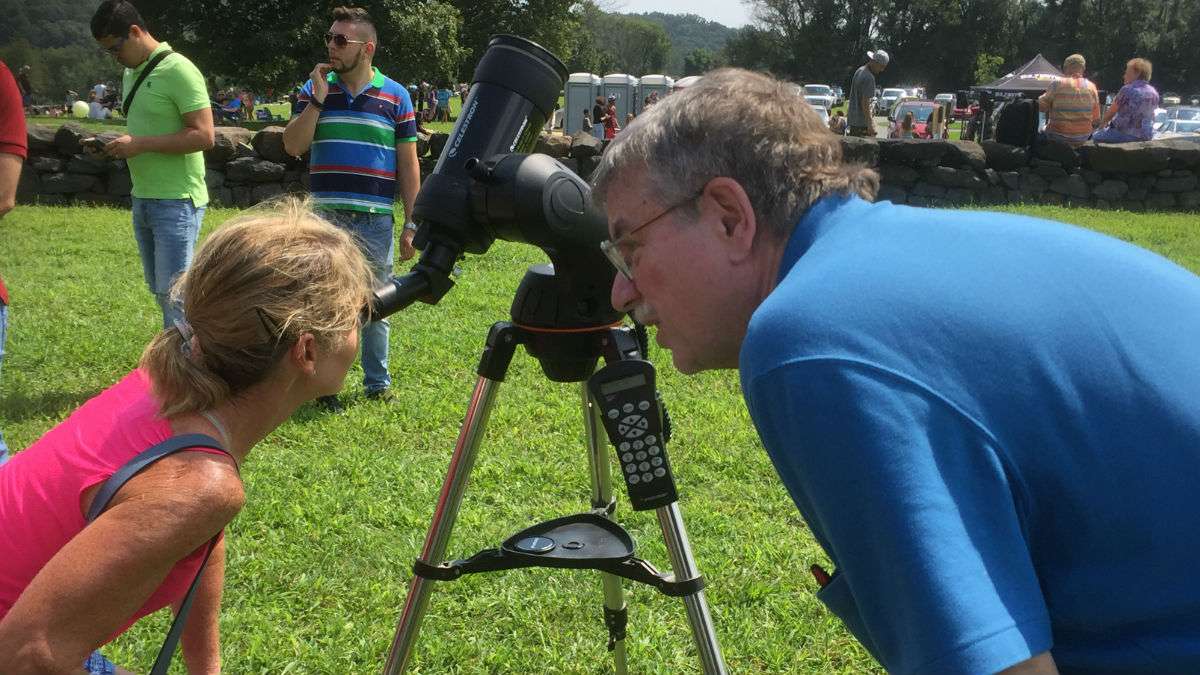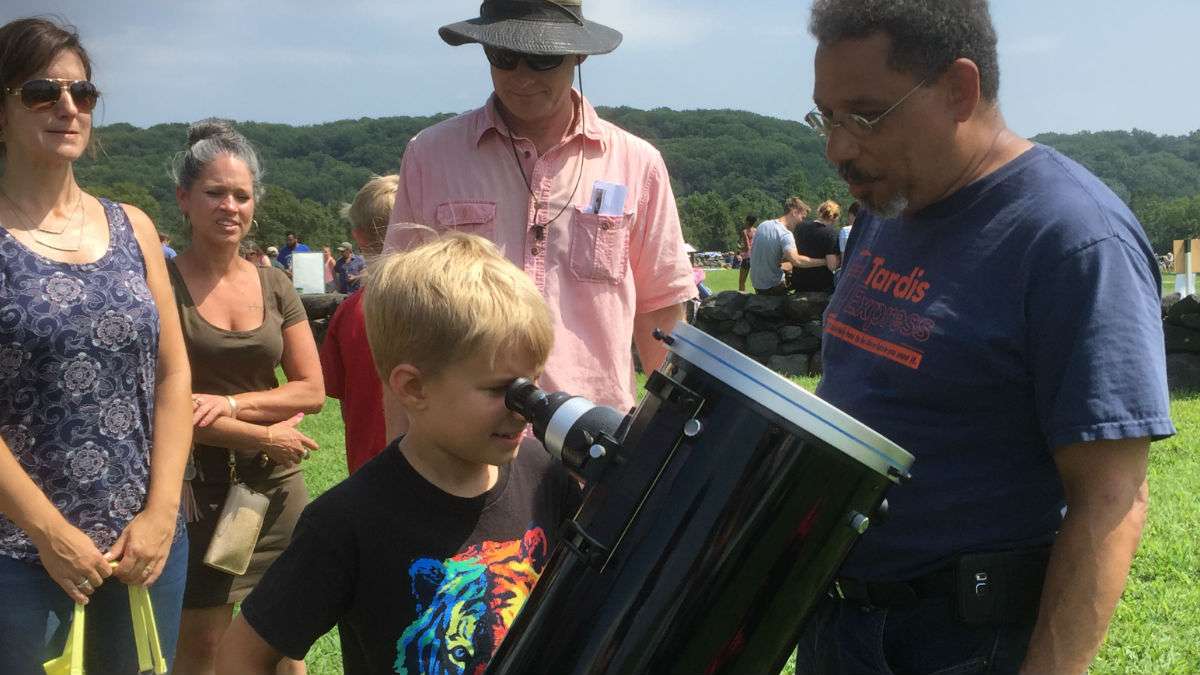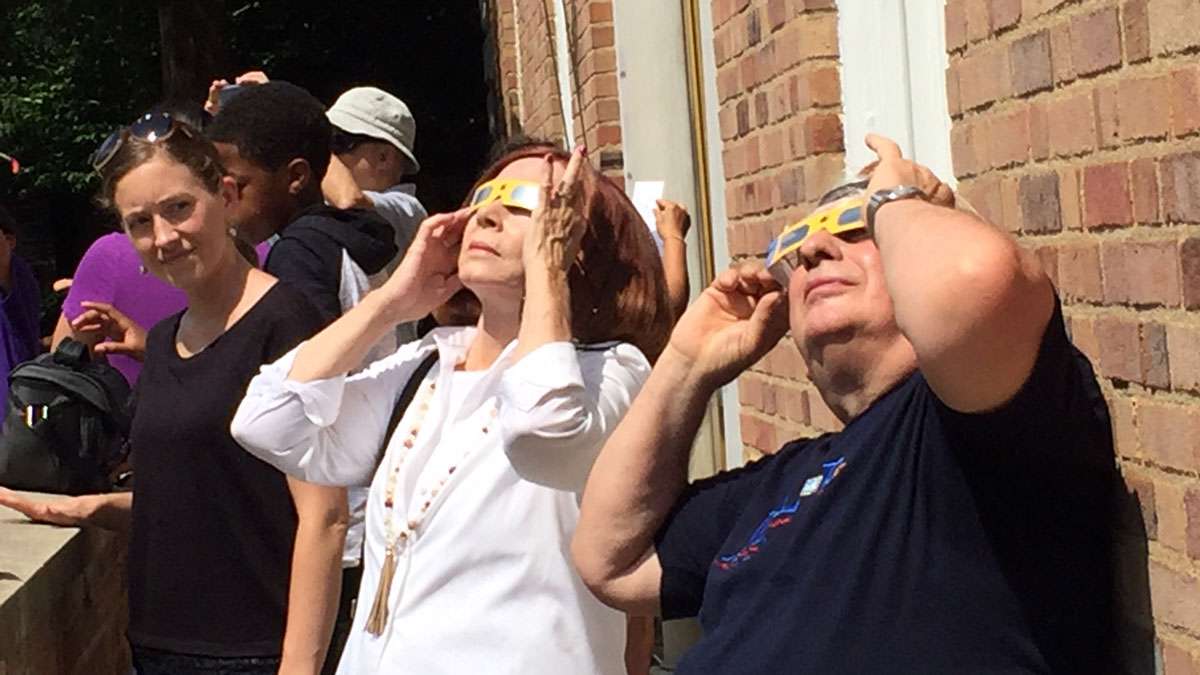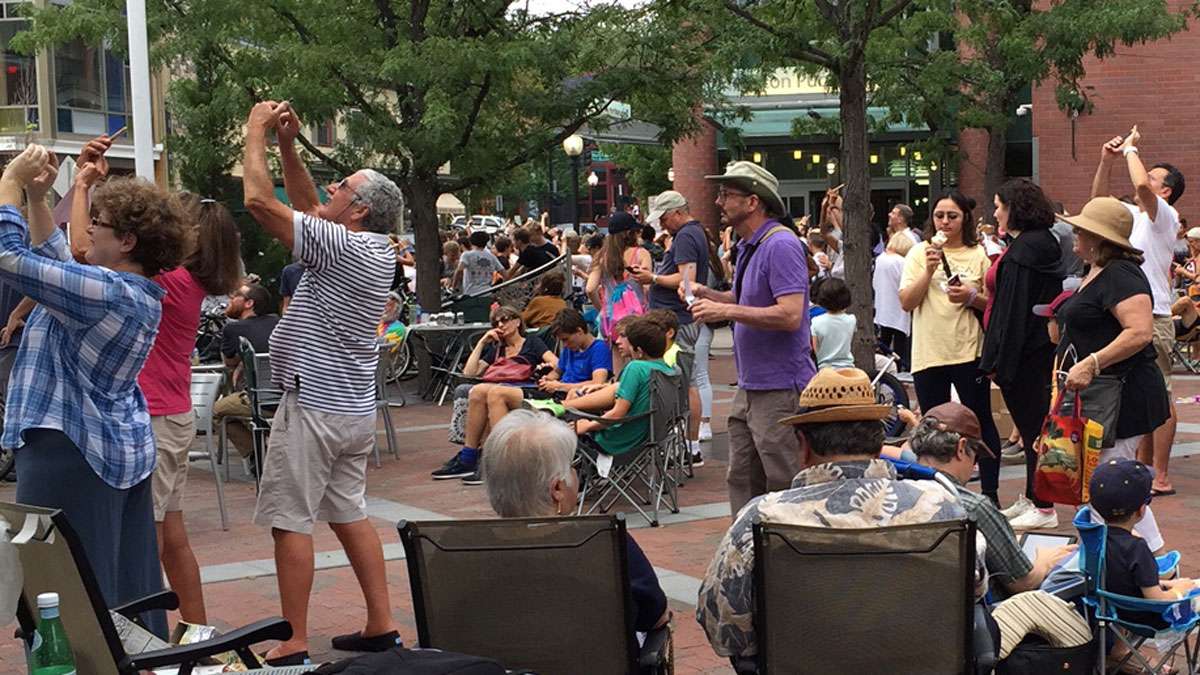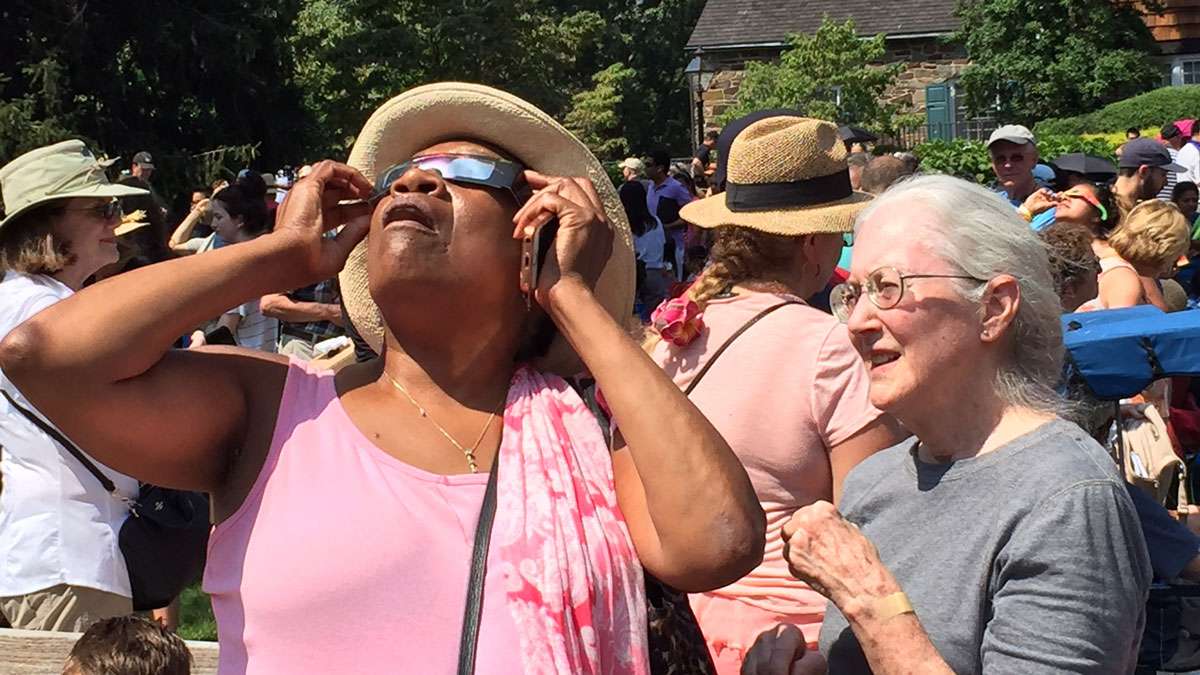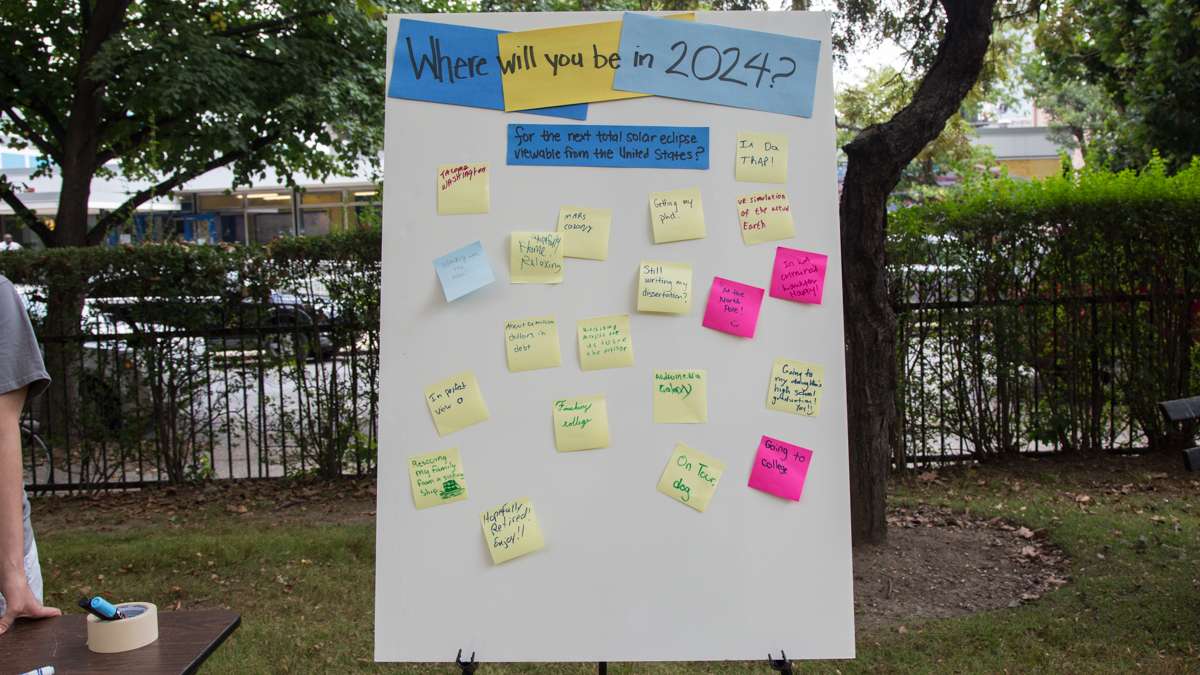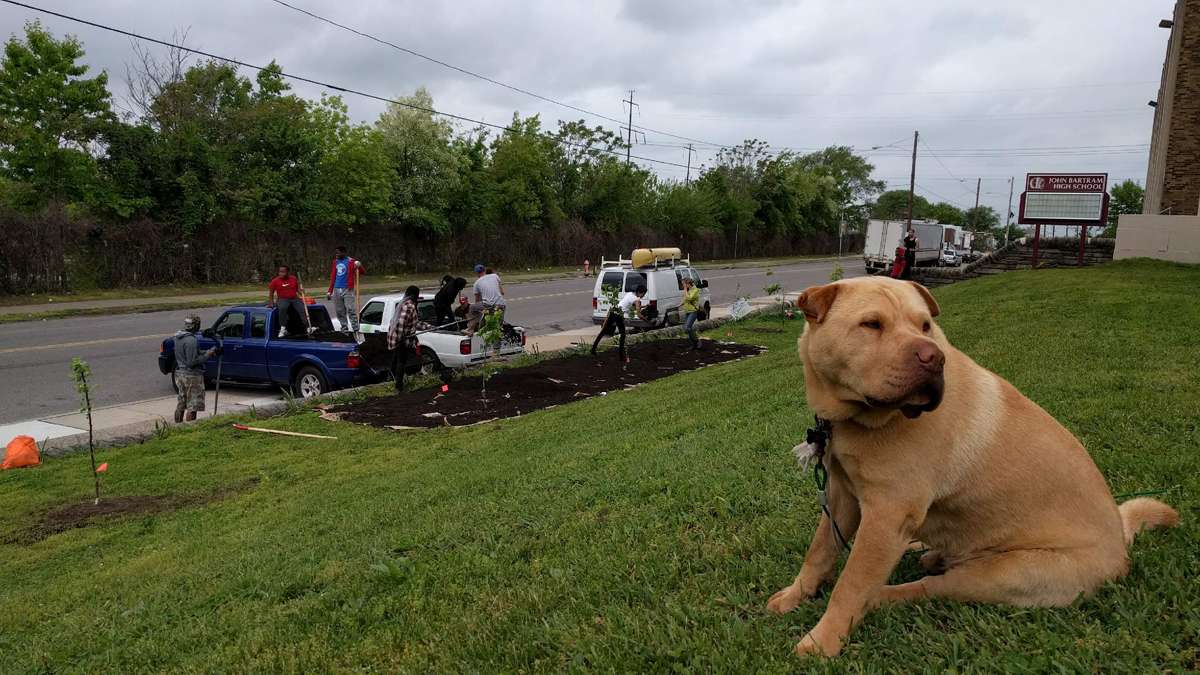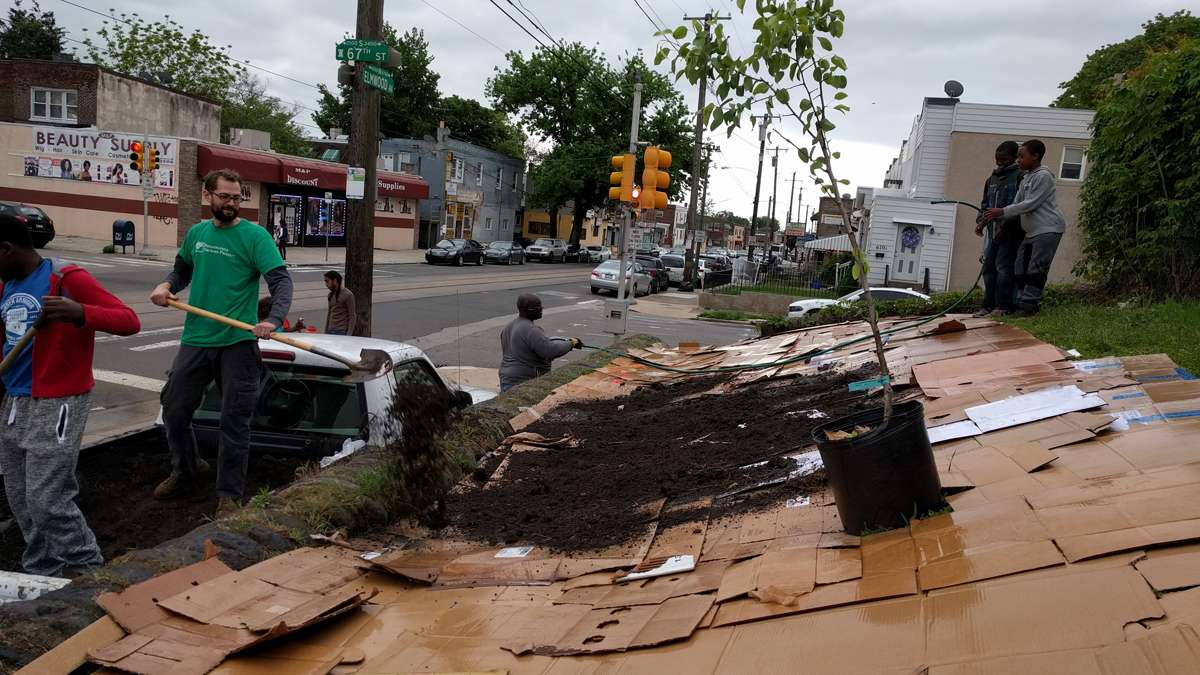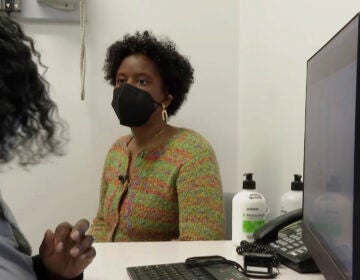Philadelphia students get dirt under their nails producing fresh fruit for their neighborhoods
In a city where far too many lack access to fresh fruits and vegetables, opportunities for communities to create their own sources of healthy food are invaluable.
Outside of Tilden Middle School in Southwest Philadelphia, a group of students plants a row of fruit trees on a grassy strip that runs along the sidewalk. On a gray, cloudy spring morning, the kids help shovel compost and mulch, and dig holes to place the young saplings. They’re making an investment in food equity in one of the most impoverished sections of Philadelphia.
“This is about knowing the food system, accessing the food system, and having the ability to change it as well,” says Tykia Jerry, 18, then a junior at John Bartram High School.”In five to 20 years, there’s going to be a whole lot of fruit around here.”
Jerry and her classmates are collaborating with the Philadelphia Orchard Project, working to increase fresh fruit availability in low-wealth neighborhoods, provide outreach on food education and build community bonds. The group identifies underutilized land where they can create and maintain orchards in schoolyards, parks and vacant lots, then trains neighbors to care for a wide variety of fruit trees, from familiar species like apple and cherry to more novel offerings such as goumis and pawpaw. The organization started on a shoestring in 2007 and has grown to a force that today supports more than 50 orchards and 1,000 fruit trees across Philadelphia.
“Our model from the beginning has been partnering with groups to build on existing resources and empower community groups across the city to become urban farmers,” says Orchard Project Executive Director Phil Forsyth. “We’ve accomplished so much in 10 years through partnership and collaboration, helping neighborhoods take their own initiative to reclaim their part in the food system.”
Forsyth, who started as a volunteer at the group’s inaugural meeting a decade ago, went on to become its first employee. Now running the organization is his full-time job. He has the help of three part-time employees and the support of numerous volunteers. Over the years, the group has lost a few sites due to school closings, but around the city are dozens of examples of thriving orchards providing much-needed food resources to the surrounding communities.
On Sept. 10, the Orchard Project will commemorate its 10-year anniversary of bringing fresh fruit to the neighborhoods that need it the most with a celebration at the Woodlands, including a trolley tour of nearby orchards planted by its members. Through the autumn, the organization is hosting a series of harvest festivals at sites across city as well as plantings and other volunteer events, providing opportunities for like-minded neighbors to participate in their own food system.
The Orchard Project works with all types of community groups and people of all ages, but engagement with students to take control of their own food habits is one of the most important parts of the mission. “Often the most rewarding for us is seeing the impact on kids, connecting with nature and interacting with food growing for the first time,” Forsyth says. “Picking their first fruit directly from the tree or vine or bush, getting their hands in the dirt, getting that direct tangible experience of food growing and understanding it doesn’t just appear at the supermarket or store.”
Schools make natural partners for youth engagement. “We’re doing this to increase proximity to green and agricultural spaces,” says Cole Jadrosich, a literacy teacher at Tilden. “The goal is opportunity for youth to create agency for themselves.”
Jadrosich runs Tilden’s garden club, guiding kids at the school’s on-site raised beds and taking them on field trips to help with orchards in other neighborhoods around the city. He works to incorporate lessons from the orchard into his literary curriculum, tying classroom activities to more hands-on work in the surrounding environment. “It’s an alternative learning space for students,” he says. “And it’s beneficial to have local sustainable sources of food for communities to access.”
At the planting day at Tilden, once the trees are in the ground the younger kids work together to tip over a five-gallon bucket a little at a time to deliver water to each sapling. In the meantime other volunteers work around the corner at Bartram to plant another row of trees. The lawn underneath is set to be transformed into a miniature food forest, with herbs and berries growing below the tree canopy.
Lessons about food access are poised to spread beyond the schoolyard. Jerry says she wants to pass on the education she’s received from working with the Orchard Product to the community at large. “We’re trying to teach the community how to eat healthier, and teach youth about food sovereignty and justice,” she says. “In this neighborhood, you just hear about rough and tough schools, but we want to draw attention to something positive.”
“People walk past, look at the orchard and see what’s going on,” says Simeon Gonzalez, an 11th grader at Bartram. “They understand we’re here to empower the neighborhood, not diminish it.”
WHYY is your source for fact-based, in-depth journalism and information. As a nonprofit organization, we rely on financial support from readers like you. Please give today.




